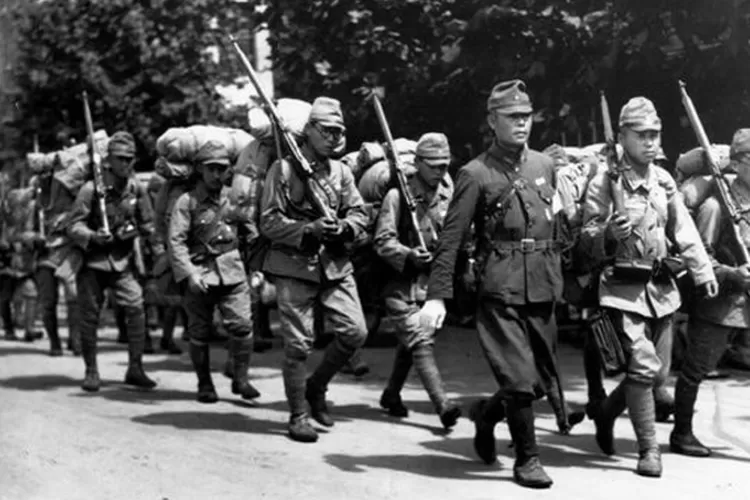A tense situation prevailed on the deck of the warship USS Missouri anchored in Tokyo Bay on September 2nd 1945. The crew and military officials from several Allied countries were preparing for an important event, but it doesn’t for war. The situation on the ship that morning was a silent witness to one of the most important moments of the 20th century. It was on board the ship that Japan declared its unconditional surrender to the Allies. This surrender ended the Second World War.
Far to the south, in an archipelago called Indonesia, the surrender was welcomed with joy. One month before the surrender, Indonesia declared its independence from Japanese colonization on August 17. It has been 79 years since Indonesia was freed from colonialism. But the traces of that time still seem to be well preserved.
In the middle of dense forests and hilly terrain of Southeast Sulawesi, The Kendari II Airfield site in Desa Ambaipua and Desa Amoito holds interesting historical sights. Recently, a study conducted by students of the Master of Archaeology Program, Faculty of Cultural Sciences, Hasanuddin University, Ersa Dwi Riyanto et al, found 56 bunkers left by the Japanese military scattered in the area.
Bunker is a defense building that is half in the ground or buried. Bunkers were built to serve as storage or shelter from enemy attacks. At the Kendari II Airfield site, bunkers are Japanese defense buildings that are found in abundance.
“In general, the bunker buildings that I saw there were made using molds. I found some boards on the bunker walls that were used to support or hold the cement cast,” Ersa told to identitas, on Thursday (29/08).
Bunker Shape Variations
Ersa found that each bunker has different design and position. Of the 56 bunkers found, there are 5 main types: Z, I, U, L, and b. These letters indicate the shape of the bunker itself.
The Z shape is the most common, with 35 bunkers. The I and U shapes were found in 4 bunkers each. L and b shapes were only found in one bunker each.
Bunkers located in the Kendari II Airfield Site area are scattered in two villages, namely Desa Ambaipua and Desa Amoito. In Desa Ambaipua, which is located within the HLO Air Force area, bunkers with Z, U, L, and I shapes were found. Meanwhile, in Amoito Village, bunkers with Z, I, and b shapes were found.
“The shape of the bunkers in Desa Amoito is more diverse, while in Desa Ambaipua, the shape of the bunkers is dominated by the letter Z,” said Ersa.
One of the factor that define the shape of bunkers are topographical location of the bunker built. “Z” bunker is found in lowlands, while the “b” bunkers is often found in highlands.
Another factor that makes the difference in the shape of these bunkers is the war strategy adopted by the Japanese. Ersa said the bunkers found close together were most likely used to connect one particular area with another to avoid ground and air attacks.
Meanwhile, in choosing the location or position of the bunkers, the Japanese considered two factors, namely environmental and security factors. The Japanese chose a closed place to trick the enemy and shelter from air attacks.
The Japanese established bunkers on hills or plateaus in addition to enclosed locations like forests. This made it easier to observe and shoot the enemy. Bunkers located in lowlands can facilitate the movement of Japanese troops, while bunkers placed around rivers function to connect each bunker and deter enemy movement.
The bunkers found in the Kendari II Airfield site are interconnected with military buildings. The entrance and exit holes between bunkers are in fairly close proximity, indicating that several important sectors at the airfield were interconnected through the existing bunker network. Bunkers were built in several important areas such as around the airfield and near the housing of the highest military leadership.
The “Unmaintaned” Historical Sites
Most bunkers are located within military areas, so accessing these defense structures requires prior permission. Although there are a few bunkers located outside the military area, they are very few in number.
Nowadays, the local people who live around these Japanese bunkers don’t really care about it. Ersa said that the community only considers them as World War II heritage defense buildings that cannot be used or utilized. That is why the bunkers on the site are neglected or abandoned.
“Although some of the bunkers are still in good condition and can be used to keep materials, they are old. It may require further study regarding its use as a shelter,” says Ersa.
The development that the government continues to make raises concerns for Ersa. She is worried that the existence of the bunkers there will not be maintained by the local residents or government. In fact, this Japanese heritage bunker is an interesting historical evidence to be studied so that it is possible to be used as a tourism object.
Therefore, Ersa hopes that this bunker will not be left unattended. But it can be maintained and preserved, and used as one of the historical tourism objects.
Read the original text in Bahasa Indonesia.
Original Writer: Rika sartika
Translated by: Nabila Rifqah Awaluddin and Nur Muthmainah


